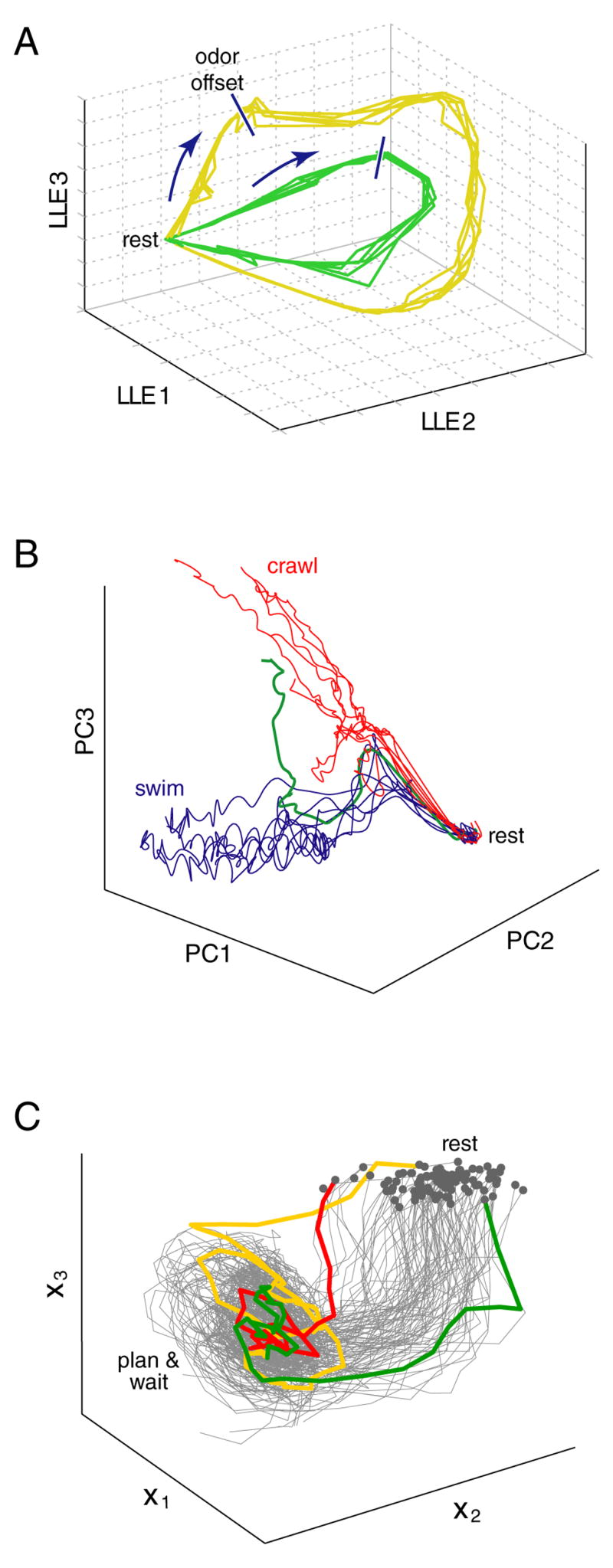Figure 3.

Reduced-dimensionality views of neural trajectories in three systems. A. Three-dimensional projection of the extracellularly-recorded spiking activity of 110 locust antennal-lobe neurons, using local linear embedding (LLE). Odor presentation drives the neural state in the direction indicated by the arrows. The state continues to evolve following odor offset, and returns to rest after ~6 seconds. The size of the looping trajectory is concentration dependent (yellow > green). Each of the 10 traces is an average of three trials. Reprinted in modified form from [53]. B. Three-dimensional projection, using PCA, of the activity of 143 neurons from one of the leech midbody ganglia, recorded using voltage-sensitive dye imaging. An electrical stimulus induced the network to ‘choose’ between crawling (red trials) or swimming (blue trials) motor patterns. Reprinted in modified form from [58]. C. Three-dimensional projection of the spiking activity of 75 units (14 single-neuron and 61 multi-neuron extracellular recordings) recorded from premotor cortex of a monkey planning a reach. Trajectories were extracted using a dynamical systems approach, in which the state of the dynamical model had three dimensions (x1,x2,x3). All data are from the ‘planning’ (pre-movement) period, starting with target onset, and ending at the time of the go cue. Reprinted in modified form from [40].
